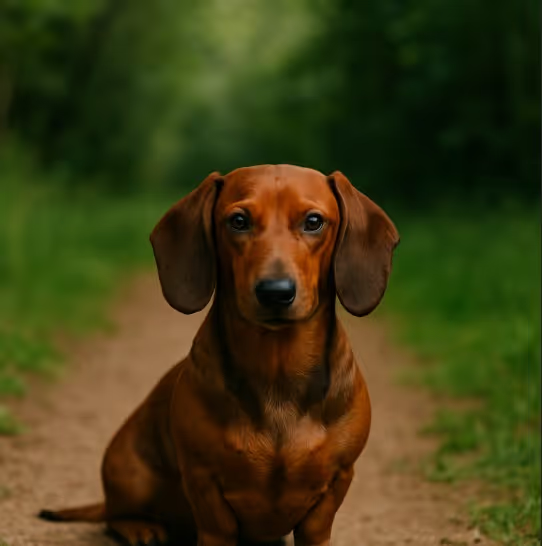The Dachshund is a lively, courageous dog originally bred in Germany for badger hunting. Recognizable by their elongated body and short legs, Dachshunds come in three coat types (smooth, longhaired, and wirehaired) and two sizes (standard and miniature). Despite their small stature, they are confident, independent, and often stubborn. Dachshunds make loving companions and are well-suited to apartments and homes alike—especially with attentive, gentle owners.

The Dachshund dates back to at least the 15th century in Germany. Developed to hunt badgers ("dachs" in German), these determined dogs were built low to the ground to dig and enter burrows. Their strong chest, paddle-like paws, and loud bark made them excellent underground hunters. Over time, breeders refined the coat types for different terrain: smooth for general hunting, longhaired for colder climates, and wirehaired for thorny brush. Today, Dachshunds are cherished household pets around the world.
Grooming varies by coat type. Smooth-coated Dachshunds require minimal upkeep, while longhaired and wirehaired varieties need regular brushing and trimming.
Recommendations:
Despite their size, Dachshunds are energetic and need daily mental and physical stimulation to avoid boredom and weight gain.
💡 Tip: Puzzle toys and nose work games are excellent enrichment for this curious hound.
Dachshunds are intelligent but independent, requiring patient, reward-based training. They may test boundaries, so consistency is crucial.
Training Tips:
Dachshunds are prone to weight gain, which can strain their back and joints. Controlled feeding and a balanced diet are essential.
Look for breed-specific rescues or reputable breeders who screen for back problems (IVDD).
Resources:
📝 Ask the breeder for history of IVDD and patellar luxation in the lineage.
1. Are Dachshunds good family dogs?
Yes, with socialization. They bond deeply with their humans but may be wary of strangers or rough handling from small children.
2. Are Dachshunds good apartment dogs?
Yes — their small size and moderate energy make them adaptable, though they may bark at noises or visitors.
3. Do Dachshunds have back problems?
They are prone to Intervertebral Disc Disease (IVDD). Prevent injuries by avoiding stair use or jumping on/off furniture.
4. What’s the difference between the three Dachshund coat types?
Smooth requires minimal care, longhaired needs regular brushing, and wirehaired requires trimming or stripping.
5. How much exercise does a Dachshund need?
Around 30 minutes per day. Break it into short walks and play sessions.